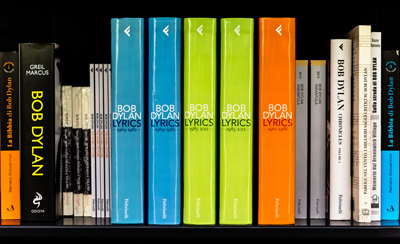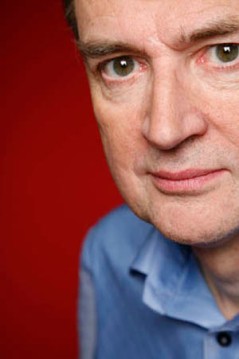
In the second half of a two-part article called It’s Alright, Ma (I’m Only Reading), to celebrate Bob Dylan’s 80th birthday, which is on May 24, Say It With Garage Flowers speaks to writer and broadcaster, Spencer Leigh, about his new book, Bob Dylan: Outlaw Blues – an impressive 450-page biography about the legendary singer-songwriter, which was published by McNidder & Grace in October last year.
For the book, Leigh, who has been broadcasting on BBC Radio Merseyside for over 40 years, and has written biographies on acts including The Beatles, Frank Sinatra, Simon & Garfunkel and Elvis Presley, spoke to more than 300 musicians, friends and acquaintances of Dylan.
“Journalists are very fond of saying Bob Dylan is an enigma,” says Leigh, “but that word is flawed. It’s as good as saying you don’t know. I have determined that I will not call Bob Dylan an enigma at any point in the book and I’m trying to find an answer for everything.”
With that in mind, we asked him to tell us why, after all this time, people are still writing and reading books about Dylan, and if there is really anything new left to say?
“The main reason for the fascination with Bob Dylan is that he has changed popular culture in a significant way for the better,” he says. “He has rarely explained what he is doing, so there is an air of mystery about him, and this is one reason why he is studied at universities.
‘I hope there is something new on every page, but that’s for other people to say’
“What I think has been overlooked is that from time to time he has shown he can be a straight, down the line commercial songwriter, with If Not For You, Lay Lady Lay, I’ll Be Your Baby Tonight and Make You Feel My Love. This has enabled him to have a significant role in the everyday commercial market. This is different from Zappa, Beefheart or Lou Reed. You couldn’t have got them to write commercial songs.”
He adds: “I never thought Bob Dylan was a hoarder and now he has sold his archive to the University of Tulsa. That could change our perception of things.”
Q&A
 Why did you decide to write another hefty tome on Dylan and how did you ensure your book was different to what’s gone before?
Why did you decide to write another hefty tome on Dylan and how did you ensure your book was different to what’s gone before?
Spencer Leigh: If people are good enough to spend time reading it, I don’t want to waste their time. I hope there is something new on every page, but that’s for other people to say. Over the years I have interviewed a lot of people for my BBC Radio Merseyside shows and so I had many quotes about Dylan, often from people who were there, like Joan Baez, Judy Collins and Ramblin’ Jack Elliott. Hunter Davies says that when you move to a new chapter, you have to ask if the readers are still with you – it’s a good tip.
‘The most surprising thing is that I couldn’t find an interview with Dylan’s former wife, Sara’
Was it a difficult book to write and research? How long did it take from start to finish?
SL: I once asked Charles Aznavour how long it took to write a particular song and he said, “Twenty minutes and 20 years.”
What were some of the most surprising or interesting things you learnt from writing and researching the book?
SL: The most surprising thing, I suppose, is that I couldn’t find an interview with Dylan’s former wife, Sara. Was that part of the divorce settlement? I would guess so, but then again Jane Asher never talks of her time with Paul McCartney. It’s an angle of the story that we may never have.
Interesting is too bland a word for someone like Dylan. He is a good example of someone who is off the scale. I was intrigued to discover his affection for Liverpool. All the bits and pieces added up to that. I had thought that he might feel the same way about Birmingham or Edinburgh, but no, every couple of years there is some little remark or action to show he loves the place.

‘I’ve spoken to quite a lot of Dylan authors and this may make my book unique’
You have spoken to an impressive amount of people for the book. Who were you most happy to have had access to, and why? And, apart from Dylan biographer, Robert Shelton, was there anyone you’d have liked to have spoken to, but couldn’t?
SL: I did have a long conversation with Robert Shelton about how he wanted £50 for an interview. That was around 1985. I should have paid and not said, “The BBC never pays for interviews.” I’ve spoken to quite a lot of Dylan authors and this may make my book unique.
Dylan turns 80 on May 24 this year. Any thoughts on him hitting that milestone?
SL: Well, I’m surprised he’s got that far, but you could say that about any rock star. I like his artwork a lot, but I would like more songs.
 In the book, you touch on his epic 2020 single, Murder Most Foul. What did you think of the album it came from, Rough and Rowdy Ways, which wasn’t out at the time you’d finished the book?
In the book, you touch on his epic 2020 single, Murder Most Foul. What did you think of the album it came from, Rough and Rowdy Ways, which wasn’t out at the time you’d finished the book?
SL: At the time I did the book, three tracks had been released. I’ve put a review of the rest of the album on my website. Dylan has now found a way of half-speaking, half-narrating his songs, which works very well. Okay, his singing voice is shot, but his speech is fantastic.
Do you have a favourite Bob Dylan song?
SL: I went to Liverpool recently for the first time in a year and bought the [new] Bob Dylan-1970 CD set. Although I’ve got many of the tracks on bootlegs, I am looking forward to hearing these cleaned-up versions.
A favourite song would be Just Like Tom Thumb’s Blues, on the ‘Judas’ tour of 1966. I was there in Liverpool and it was just as rowdy as Manchester. I had never seen an artist alienate a lot of his audience before and I am convinced, now that I have researched the book, that he was loving every minute of it.
Bob Dylan: Outlaw Blues by Spencer Leigh is out now. It’s published by McNidder & Grace.
For more information, visit:
http://www.spencerleigh.co.uk/
Read the first part of the article, here, which is an interview with K G Miles, co-author of the book Bob Dylan In London: Troubadour Tales (McNidder & Grace).






